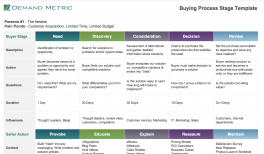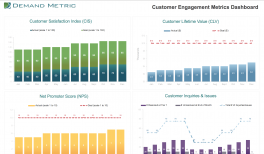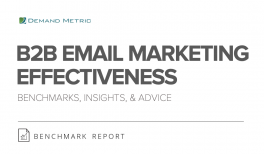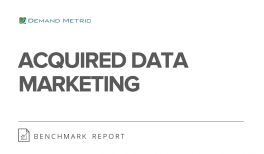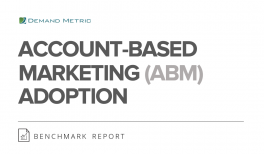This report presents the current state of B2B demand generation, specifically gathering data to understand whether, and if so, and where predictive analytics can contribute to greater demand generation effectiveness.
B2B Demand Generation and Predictive Analytics Benchmark Report
Resource Overview
Related Resources
Introduction
B2B demand generation is an area of major investment whose performance is critical to revenue growth. Radius and Demand Metric recently partnered to understand current pain points for B2B demand generation marketers and how predictive analytics address those challenges now and in the future.
Increasingly, B2B demand generation carries greater expectations to produce qualified leads at higher volumes. The emphasis on quality and quantity challenges the delicate balance between information gathering and sensitive lead nurturing. Efforts to improve demand generation are well justified; the top barrier to achieving revenue objectives identified in this study is demand generation process effectiveness. With demand generation so clearly a part of the critical path to revenue, B2B marketers are eager to discover and explore approaches, technologies and data sources to drive more effective demand generation. As one survey participant stated, “Demand generation is our primary issue.”
This study catalogues the current state of B2B demand generation, specifically gathering data to understand whether, and if so, and where predictive analytics can contribute to greater demand generation effectiveness. This report presents the findings of this research, giving B2B marketers a set of benchmarks for comparison along with ideas for improvement.
Table of Contents
- Introduction
- Executive Summary
- Barriers and Challenges
- Key Findings
- Use of Predictive Analytics
- Analyst Bottom Line
- Acknowledgements
- Appendix - Survey Background
Research Methodology
This 2016 B2B Demand Generation Benchmark Study survey was administered online during the period of February 16 through March 7, 2016. During this period, 319 responses were collected, 295 of which were qualified and complete enough for inclusion in the analysis. Only valid or correlated findings are shared in this report.




